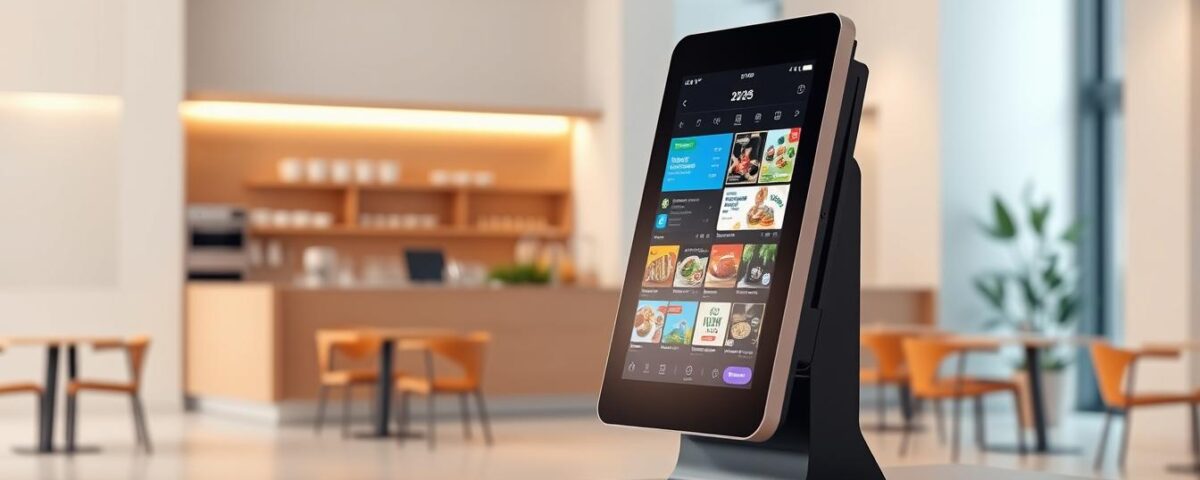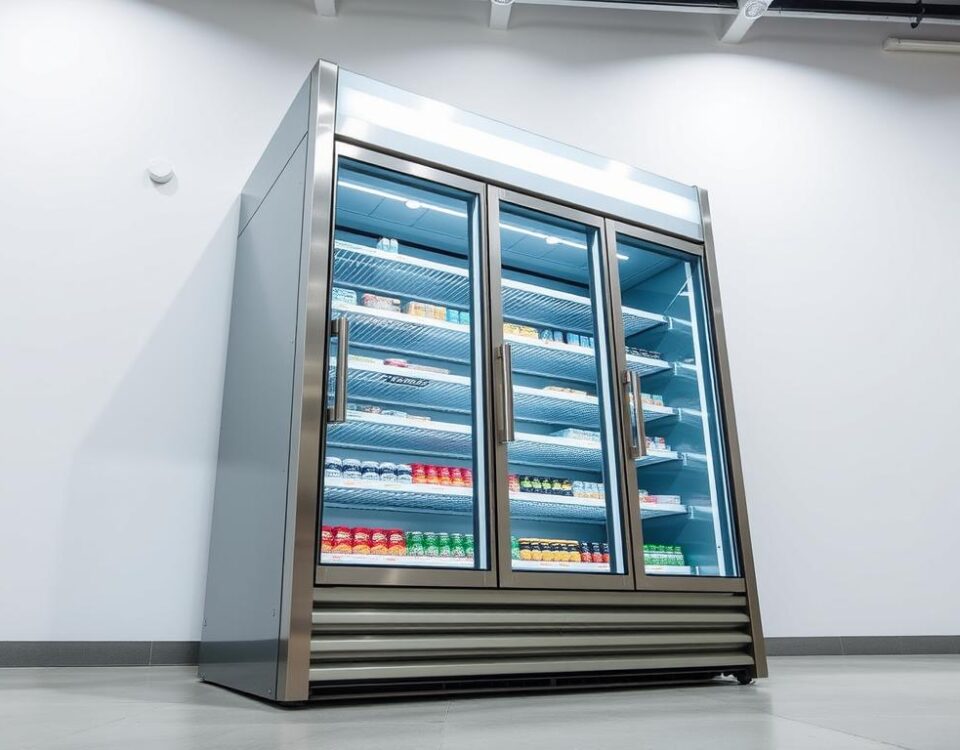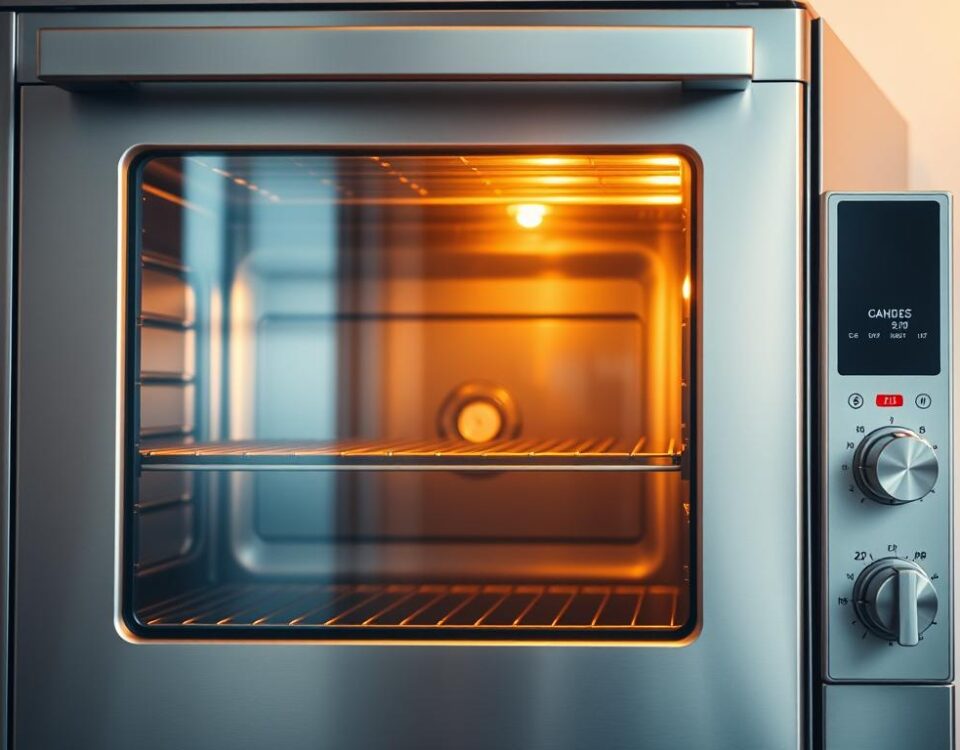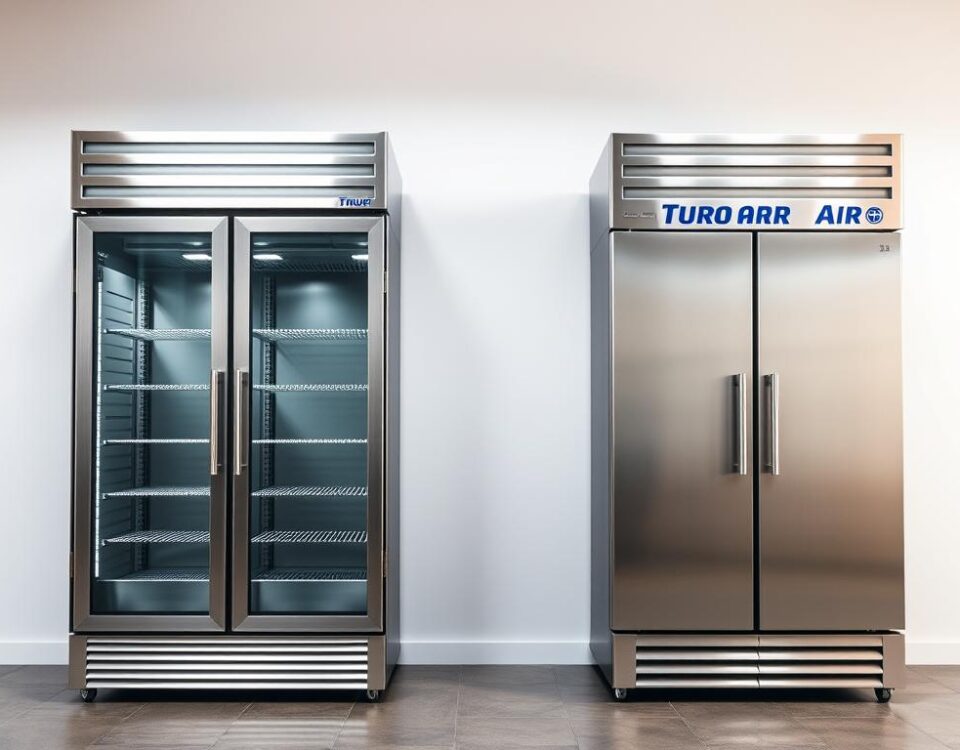
6 Instagram Growth Hacks for Restaurants in 2025
August 3, 2025
Top 7 Restaurant Payment Systems in 2026
August 4, 2025As a restaurant owner, you’re likely no stranger to the challenges of providing a seamless customer experience while maintaining operational efficiency. I recall a visit to a popular fast-food chain where I was impressed by the ease of ordering through a touchscreen kiosk. It was quick, intuitive, and eliminated the need to wait in line.
Did you know that restaurants using ordering kiosks have seen a significant reduction in wait times and an increase in customer satisfaction? With the rise of technology, kiosks are becoming an essential tool for businesses looking to stay ahead.
As we move into 2025, the question is: how can you leverage self-order kiosks to revolutionize your customer experience and boost your bottom line? In this guide, I’ll walk you through the process of choosing the right kiosk for your business, ensuring you stay competitive in a rapidly evolving market.
Key Takeaways
- Understand the benefits of implementing self-order kiosks in your restaurant.
- Learn how to choose the right kiosk solution for your business needs.
- Discover the key features to look for in a kiosk system.
- Find out how kiosks can improve customer experience and reduce wait times.
- Get insights into the future of kiosk technology and its potential impact on your business.
Understanding Self-Order Kiosks in 2025
As we step into 2025, self-order kiosks are revolutionizing the dining experience. These interactive terminals are transforming the way customers interact with restaurants, making the ordering process faster and more efficient.
What Are Self-Order Kiosks?
A self-service kiosk or digital kiosk is an intuitive touchscreen interface that lets customers explore the digital menu, customize items based on dietary preferences or special requests, and complete their order with contactless payments, all without needing assistance from restaurant staff. These kiosks are built to deliver faster order processing, greater accuracy, and a seamless experience.
Why Self-Order Kiosks Are Essential in 2025
In 2025’s competitive restaurant landscape, self-ordering kiosks have become essential. They cater to the rising customer expectations for speed and convenience. By adopting kiosks, restaurants can reduce wait times, empower customers to manage their orders, and increase overall satisfaction. The integration of advanced technology has made these kiosks more intuitive and responsive, capable of handling complex ordering scenarios, thus enhancing the overall ordering experience.
Types of Self-Order Kiosks for Your Business
As we dive into 2025, the options for self-order kiosks are more diverse than ever, catering to various business needs. When choosing a self-order kiosk, it’s essential to consider the layout of your restaurant and the flow of your customers. I’ll guide you through the three main types available, helping you understand which might work best for your specific situation.
Freestanding Kiosks
Freestanding kiosks are ideal for quick-service and fast-food settings, offering high visibility and accessibility for foot traffic. These kiosks can create dedicated ordering stations, reducing congestion at traditional counters.
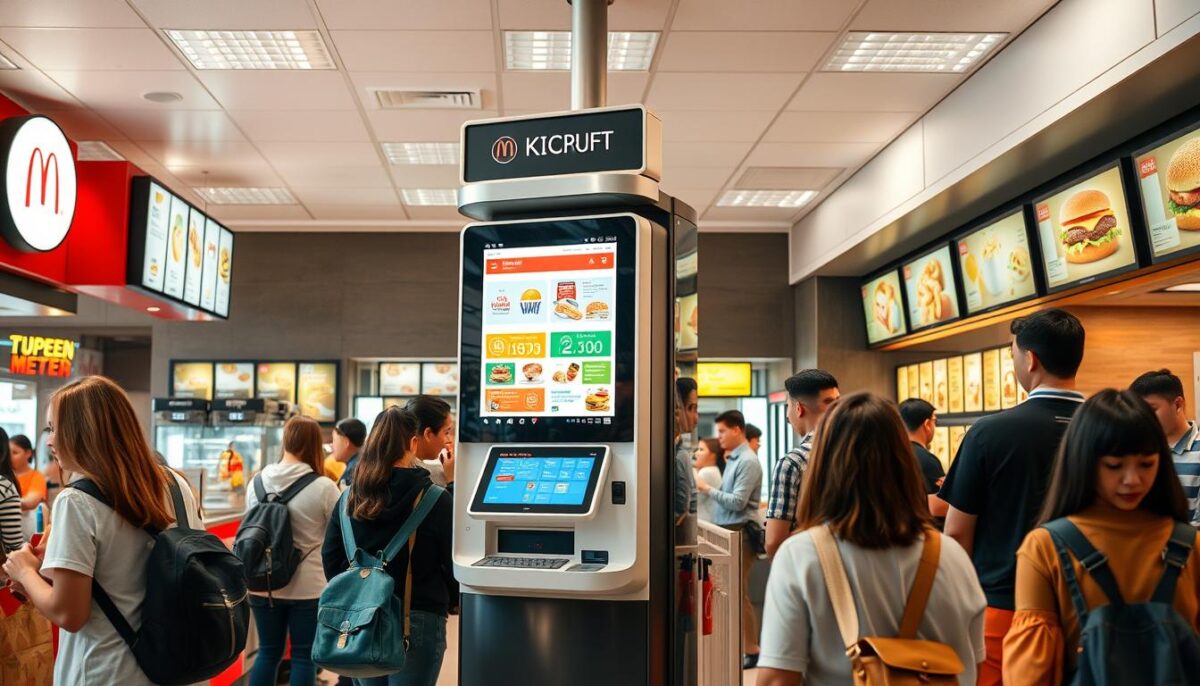
Wall-Mounted Kiosks
Wall-mounted kiosks are perfect for restaurants with limited floor space, providing a sleek and space-efficient design. They offer the same functionality as freestanding kiosks while preserving valuable floor area for seating or movement.
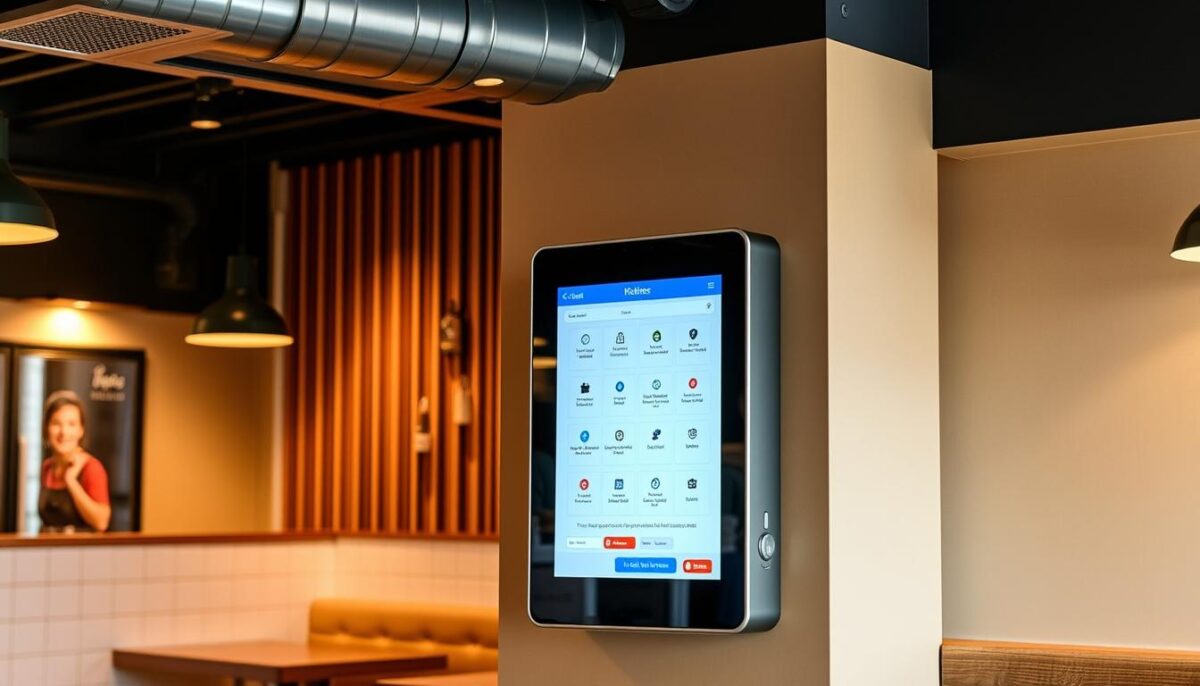
Tabletop Kiosks
Tabletop kiosks enhance casual dining and at-table service, allowing customers to order additional items without waiting for server attention. They’re great for encouraging extra orders and improving the overall dining experience.
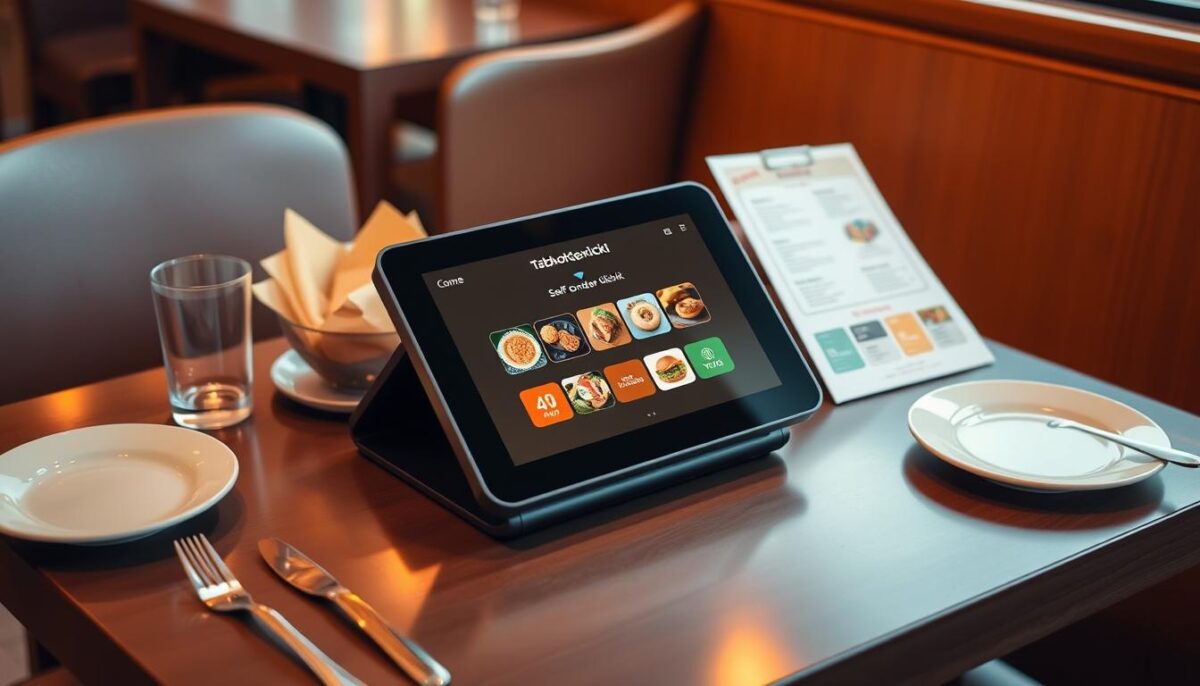
By understanding the different types of self-order kiosks available, you can make an informed decision that suits your business needs and enhances your customers’ experience.
Key Benefits of Self-Order Kiosk Implementation
The benefits of self-order kiosks extend far beyond just convenience, offering a transformative experience for customers and staff alike. By implementing these systems, businesses can significantly improve their operational efficiency and customer satisfaction.
Reducing Wait Times and Improving Service Speed
Self-order kiosks significantly reduce wait times by allowing multiple customers to place orders simultaneously, especially during peak hours when traditional ordering methods create bottlenecks. This speeds up service and customer flow, increasing order throughput and minimizing frustration during busy periods.
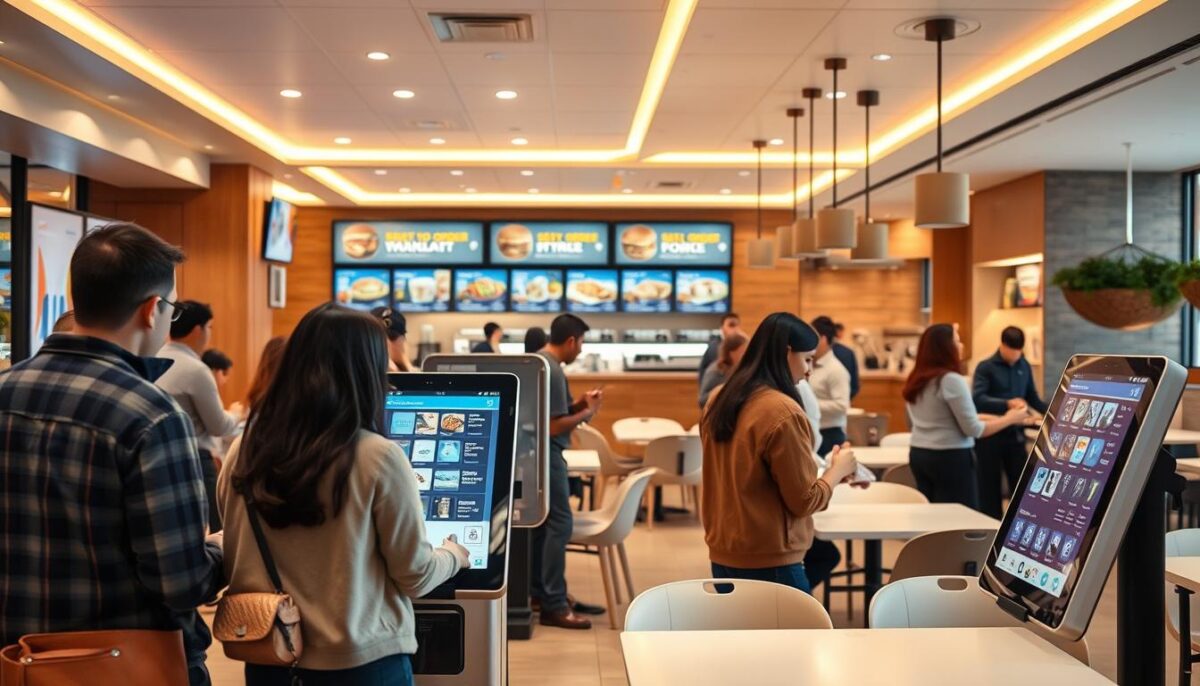
Increasing Average Order Value
Built-in upsell and cross-sell features prompt customers with suggested menu items and combos, leading to higher per-order value. Many restaurants report 15-30% increases in average ticket size after implementing kiosks, resulting in increased revenue.
Enhancing Order Accuracy
Kiosks enhance order accuracy by eliminating miscommunication between customers and staff, resulting in fewer errors and greater customer satisfaction. By giving customers control over their ordering process, businesses can reduce the likelihood of mistakes and improve overall customer experience.
Optimizing Labor Costs and Staff Allocation
Implementing kiosks can optimize labor costs by allowing businesses to reallocate staff from order-taking to more value-adding activities like food preparation and customer service. This strategic allocation of resources can lead to improved operational efficiency and reduced labor costs.
Essential Features of a Self-Order Kiosk Guide 2025
Self-ordering kiosks in 2025 are designed with the customer in mind, featuring intuitive interfaces and personalized options. As technology advances, these kiosks are becoming increasingly sophisticated, enhancing the overall dining experience.
Intuitive User Interface Design
A well-designed interface is crucial for a stress-free user experience. Large buttons, easy-to-read fonts, and clear icons reduce confusion and support faster ordering, especially for first-time users or customers unfamiliar with the technology.
Customization and Personalization Options
A good kiosk should allow customizable menu options such as combo creation, add-ons, allergen filters, and real-time pricing adjustments. This empowers customers to tailor their meals to their preferences while helping restaurants upsell through smart modifiers.
Multilingual Support
Multilingual support has become essential for kiosks in diverse markets, enabling businesses to serve international customers without communication barriers. This feature is particularly important in areas with high tourist traffic or diverse local populations.
Payment Processing Capabilities
Modern kiosks should offer a range of payment processing capabilities, from traditional card payments to mobile wallets and contactless options. This flexibility ensures that customers can pay using their preferred method, enhancing the overall experience.
AI-Driven Recommendations
AI-driven recommendation engines are transforming the kiosk experience by suggesting relevant menu items based on customer ordering patterns, weather conditions, time of day, and even previous purchases. This personalized approach can increase average order value and enhance customer satisfaction.
| Feature | Description | Benefit |
|---|---|---|
| Intuitive Interface | Easy-to-use touchscreen interface | Reduces confusion and speeds up ordering |
| Customization Options | Personalized menu options and modifiers | Enhances customer satisfaction and increases average order value |
| Multilingual Support | Support for multiple languages | Serves diverse customer base effectively |
Seamless Integration with Restaurant Systems
To get the most out of your self-order kiosk, it’s essential to integrate it with your restaurant’s POS, inventory, and kitchen display systems. This integration is critical for operational efficiency in 2025, as it minimizes errors and speeds up operations.
POS System Integration
Proper POS system integration ensures that all orders flow smoothly from the kiosk to your main sales tracking and reporting platform without manual intervention. This streamlines your operations and reduces the likelihood of errors. A good kiosk system should seamlessly integrate with your restaurant’s POS.
Inventory Management Synchronization
Inventory management synchronization allows your kiosk to automatically update product availability in real-time, preventing customers from ordering items that are out of stock. This smart integration helps you cut food waste and maintain proper stock levels during busy hours.
Kitchen Display System Connectivity
Kitchen display system connectivity ensures that orders placed at kiosks are immediately visible to kitchen staff, maintaining efficient preparation workflows. This connectivity is vital for ensuring that orders are prepared correctly and in a timely manner.
When selecting ordering systems, it’s crucial to evaluate their integration capabilities, including questions to ask vendors about API availability and compatibility with your existing technology stack.
Overcoming Common Implementation Challenges
Self-order kiosks offer numerous benefits, yet their successful integration depends on overcoming common challenges. Businesses must address these hurdles to ensure a seamless customer experience.
Customer Resistance and Adoption Strategies
Some customers may feel overwhelmed by touchscreen technology or hesitant to place orders without human interaction. To simplify the process, use intuitive interfaces, animated walkthroughs, and clear menu options. Providing staff assistance during peak hours can also reassure first-time users and build confidence.
- Simplify the ordering process with user-friendly designs
- Offer assistance during peak hours to support customers
Technical Reliability and Maintenance
Ensuring the technical reliability of self-order kiosks is crucial to minimize downtime and service interruptions. Regular maintenance routines should be established to keep the kiosks functioning properly. This includes updating software and checking for hardware issues.
- Regularly update software to prevent technical issues
- Conduct routine checks to identify and fix hardware problems
Space Constraints and Design Considerations
Businesses with limited space need to consider alternative mounting options and space-efficient designs when integrating kiosks. This can include wall-mounted or tabletop kiosks that save floor space while still providing an effective service.
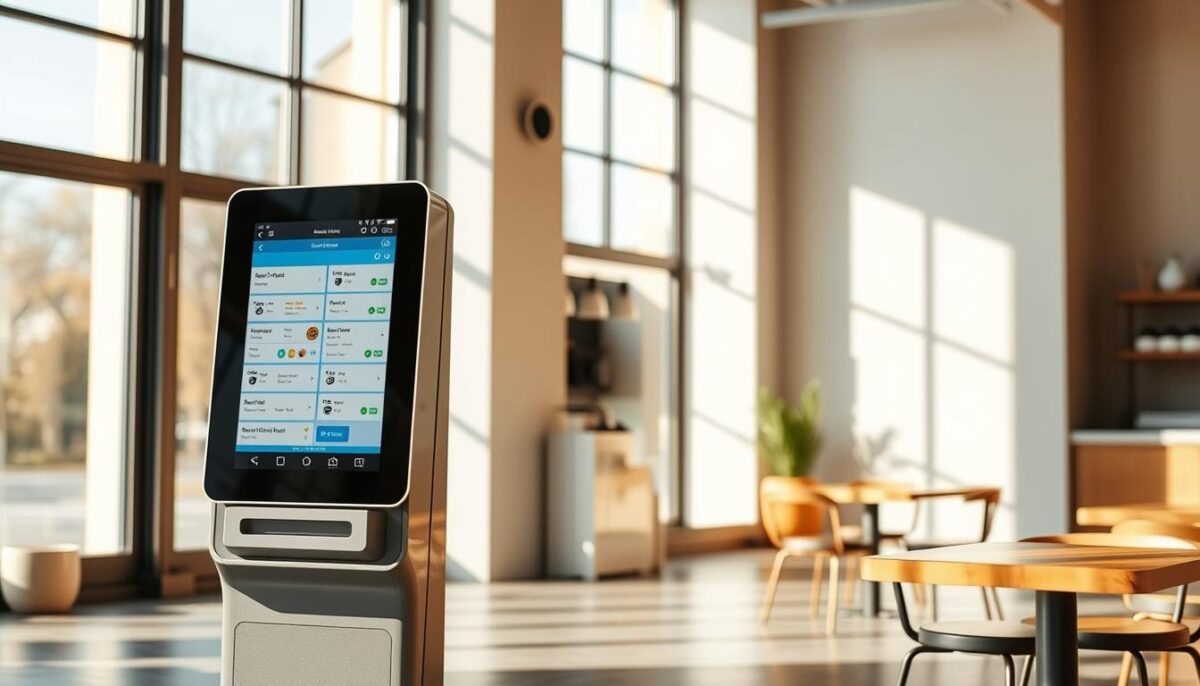
Data Security and Privacy Considerations
As self-order kiosks become more prevalent in 2025, data security and privacy considerations are taking center stage. Your kiosk must protect customer payment data at all costs. This involves implementing robust security measures to safeguard sensitive information.
Secure Payment Processing
Secure payment processing is critical for self-order kiosks. Encryption, tokenization, and strong user authentication create a solid defense against threats. The best kiosks in 2025 will use AI-powered fraud detection to spot unusual patterns before they become problems. Many restaurants now add biometric options like fingerprint or facial recognition for extra security.
Compliance with Privacy Regulations
Privacy laws require your kiosk to tell customers how you collect their data. Your self-ordering system must display clear privacy policies that explain what personal information you gather and how you use it. Compliance with regulations like GDPR and CCPA is essential to avoid legal issues.
| Security Measure | Description | Benefit |
|---|---|---|
| Encryption | Protects data by converting it into a code | Prevents unauthorized access |
| Tokenization | Replaces sensitive data with a unique token | Reduces risk of data breaches |
| Biometric Authentication | Uses fingerprints or facial recognition for authentication | Adds an extra layer of security |
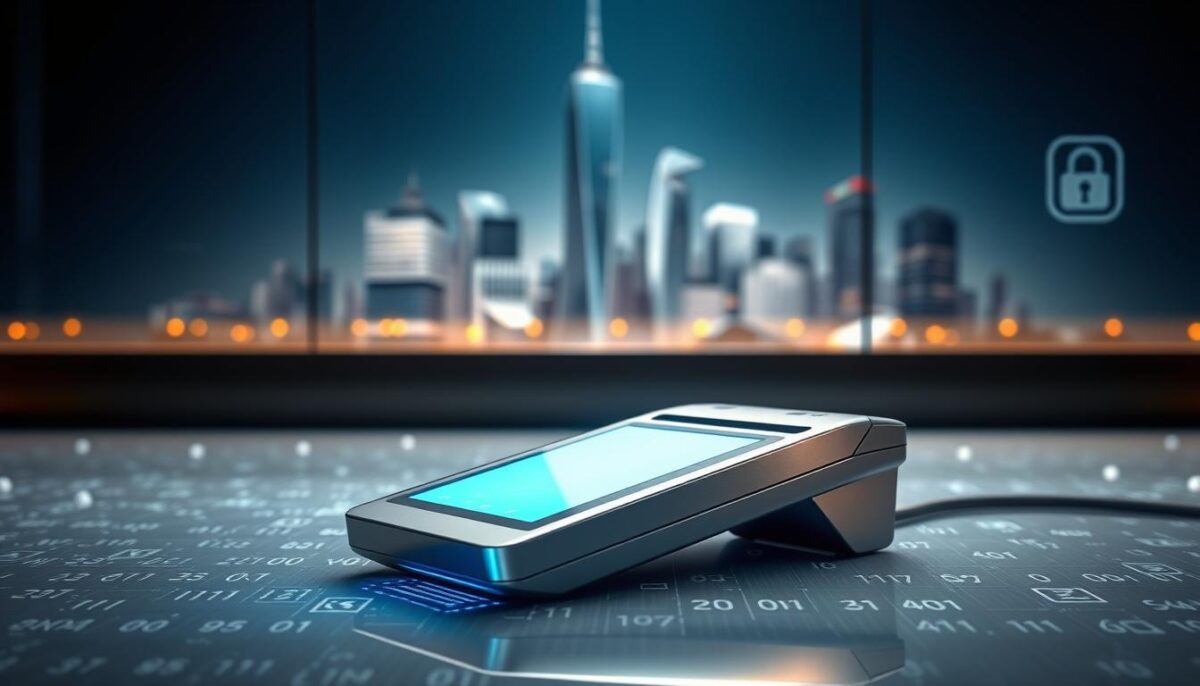
Conclusion
As we look towards 2025, the integration of self-ordering kiosks is set to revolutionize the way restaurants operate. Throughout this guide, we’ve explored the various aspects of selecting and implementing these systems, from understanding the different types of kiosks to addressing security considerations.
The right self-ordering kiosk solution can significantly enhance operational efficiency while improving the customer experience through faster service and personalized ordering. To maximize the benefits, it’s crucial to evaluate your business needs and customer expectations when choosing a kiosk system, focusing on features and integration capabilities that add value.
Successful implementation requires careful planning around customer adoption, staff training, and ongoing maintenance. By embracing this technology, you’ll be well-positioned to meet evolving consumer expectations and stay competitive in a digital landscape.
FAQ
How do self-ordering systems improve customer experience?
Self-ordering systems improve customer experience by reducing wait times, allowing customers to order at their own pace, and minimizing errors. This leads to increased customer satisfaction and loyalty.
What types of payment options are typically supported by ordering kiosks?
Most ordering kiosks support various payment options, including credit cards, debit cards, mobile payments, and cash. Some kiosks may also offer loyalty programs and promotional discounts.
Can I customize the menu items on my restaurant’s ordering kiosk?
Yes, you can customize the menu items on your restaurant’s ordering kiosk to reflect your menu offerings, including daily specials and seasonal items. This helps ensure that customers have access to the most up-to-date menu information.
How do ordering kiosks integrate with existing POS systems?
Ordering kiosks can integrate with existing POS systems through APIs or other integration methods, allowing for seamless transfer of orders and payment information. This helps streamline operations and reduce errors.
What are the benefits of using AI-driven recommendations in ordering kiosks?
AI-driven recommendations in ordering kiosks can help increase average order value by suggesting relevant menu items to customers based on their ordering history and preferences.
How do I ensure data security and privacy with my ordering kiosk?
To ensure data security and privacy, it’s essential to choose an ordering kiosk that is compliant with relevant regulations, such as PCI-DSS, and has robust security features, including encryption and secure payment processing.
Can ordering kiosks be used in different types of restaurants and businesses?
Yes, ordering kiosks can be used in various types of restaurants and businesses, including quick-service restaurants, casual dining establishments, and retail stores, to improve customer experience and streamline operations.
